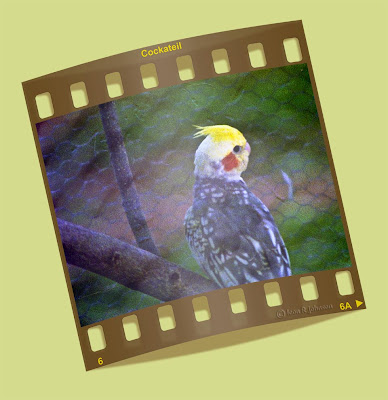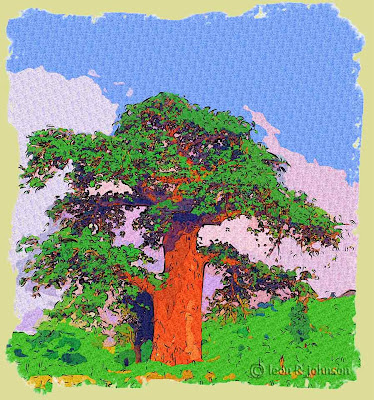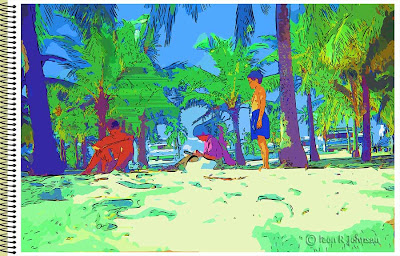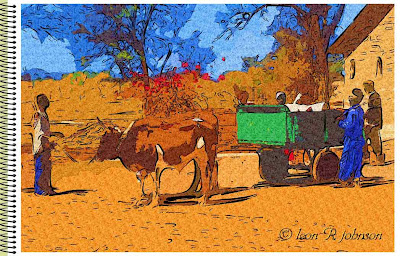Disclaimer
Although I was thoroughly impressed with Barak Obama before I knew anything of his biography, it is true that similarities in our life adventures draw me even more to support him because of the broad cultural experience he brings with him and the dramatic way his life expresses the American ideal.
Obama was born in Hawaii and spent most of his youthful years there. My wife was born and raised in Hawaii and my daughter was born there. I, personally, feel more at home in Hawaii than in any other state of the union. The multi-cultural life in Hawaii is a good basis for a president who wishes to lead and represent a nation of diversity. I gotta geevum fo' da kine local boy.
Obama's father came from Kenya in East Africa. Just out of college I lived in Tanzania, Kenya's next door neighbour and at that time fellow member of the East African Community. I visited Kenya often. Barak Obama is African American in the truest sense. My two sons were born in Zimbabwe. They, too, could be called African Americans by geography of birth. Africa is in my family's blood. My daughter and older son did their secondary schooling in Kenya. The sense of identity many in Africa and other countries feel for Barak Obama opens doors for him to lead on the world stage in a unique way.
These are some of the reasons I feel a special affinity for Obama in addition to the attraction to policy positions and philosophical positions that agree with mine. This affinity will strengthen my support of him even when we disagree.
Transitional Symbol
Obama, for me, is also a transitional symbol. I welcome the change in the USA that his election represents.
I remember when the only contact I had with non-white Americans was in the cotton patch. In the fall when the cotton was ready to harvest, schools closed and we all went to work picking cotton. Blacks and whites shared the labour in the fields but not the same water bucket. We were side-by-side in the field and some conversations and superficial friendships were possible. But we went back to separate schools when the cotton was harvested and used separate bathrooms and water fountains in the towns. When the white churches held revivals in the small southern towns, they knocked on every door to invite folks. White people were invited to the revival. Black people were invited to visit the local black church. (
That never quite fit into my understanding of God. When we sang "Red and yellow, black and white, they are precious in His sight" I took it literally.)
I remember when my high school was integrated. A neighbouring school wouldn't allow our pep squad to attend the basketball game when we played in their gym. Our black players could come. We were all very frightened and ready to fight for our team mates. We "joked" about which of us would be hanging from the flag pole after the game. But we were seriously afraid.
I could tell more horror stories of what life was like back then. There were time when there was a double risk for those who crossed the colour barrier. One could be attacked (physically and verbally) by both white extremists and black extremists whose only point of agreement was that we must be separate.
The election of Barak Obama and the beauty of his family on the stage at his victory speech was like a fresh wind rejuvenating hope after the dark despondency brought on by his predecessor. For many of us the death of Dr. Martin Luther King, Jr. was the beginning of what seemed to be a never ending nightmare.
Barak Obama's election may, just MAY, be a symbol that change really is coming. Sam Cooke, you sang about it. You were not a dreamer, you were a prophet.
Barak Obama and Zimbabwe
The election of Obama brings my mind back to my adopted home of Zimbabwe (where I wish I were). Obama's election highlights one difference between the USA and Zimbabwe that plays a role in causing the USA to overcome difficulties while Zimbabwe is self-destructing. It's a simple difference in attitude and law (but one that some Americans are loosing sight of, making them more akin to Mugabe's party than the American Founding Fathers). It is the practice of inclusion rather than exclusion.
Obama's father was not a US citizen. But Barak Obama was born in the USA, and even if his mother had not been a citizen, he became a citizen by birth. A Zimbabwean friend of mine studying for his PhD in the USA had a son born here. His son is a US citizen. He is eligible to become president of the USA. The French recognized the significance of this attitude when they presented the people of the USA with the Statue of Liberty. The USA builds upon the gifts, skills and aptitudes of those whose parents chose the USA as home. And the USA is a better country for this inclusivity.
On the other hand, my sons were born in Zimbabwe and their birth certificates clearly state that they are not eligible for citizenship. Not only that, Mugabe has actively tried to drive out others who were born in Zimbabwe. Second, third and even fourth generation Zimbabweans whose ancestors came from Malawi, Moçambique, Lesotho and other countries are denied citizenship and efforts have been made to repatriate them to countries they have never known. As a result Zimbabwe is losing many who could be contributing to the betterment of the country. Many who love Zimbabwe and would sacrifice to build the nation have been forced to leave in order to survive. Many of the brightest and most skilled are now building other countries and will probably never return. The brain drain will leave the country with only the least qualified as the building blocks for recovery.
Barak Obama is a symbol of what can be accomplished when a country practices inclusivity. He could not have risen so high in Zimbabwe. I'm thankful his father chose to study in the USA rather than in Zimbabwe.
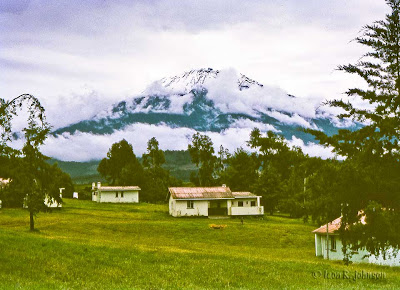

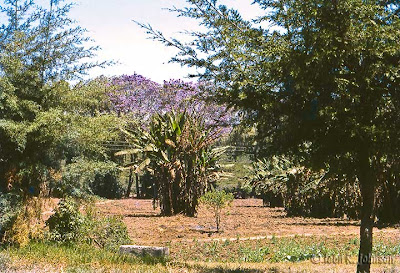

 It was quite a mansion. Nyumba yangu!
It was quite a mansion. Nyumba yangu!







